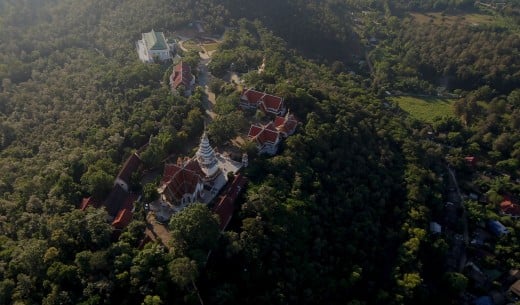Name : Gokarneswara Temple
Location :
Mahendragiri, is a mountain peak at in the Paralakhemundi (or Parlakhemundi) subdivision of the district of Gajapati, Orissa, India. It is situated amongst the Eastern Ghats at an elevation of 1,501 meters (4,925 ft).
.
Legend :
Legend says that it is the place where lord Parashurama,a Chiranjeevi staying eternally and doing tapasya.Temples built by Pandavas are seen.Main festival here is Shivaratri,the worship of Shiva,the guru or percepter of lord Parashurama.
It is associated with mythological stories from the Ramayana as Mahendra Parvata (mountain). It is also Known as the Southern Amarnath of Orissa. a ‘Kula Parvata’ along with Malaya, Sahyadri, Parijatra, Shuktiman, Vindhya and Malyavaan
Legend has it that the linga was installed
by the Pandavas of the Mahabharata era. Construction of the 8-feet-high temple is also attributed to the
Pandavas. The Pandavas are believed to have performed the ritual to
worship Gokarneswara at the crack of dawn on Shivaratri before they left
the place.Sarala Dasa, the author of Oriya Mahabharata, attributes the establishment of the Gokarnesvara Sivalinga to Pandava brothers who visited Mahendragiri during the period of their exile.
Description :
Shivaratri was once more celebrated with pomp ,devotion and gaiety in Gajapati , and the main function was at the famous and historical Mahendragiri Hills .The administration had made elaborate arrangements for the a safe and smooth Shivaratri on the Mahendragiri Hills . More than 50,000 devotees from all parts of the state had reached the footsteps of the Mahendragiri Hills from where they trekked up the hills through the Burkat Pass .Ladies and aged women in large numbers braved the chill and dark night to go up the Mahendragiri Hills to have a glimpse of the Shiva Lingas inside the three temples namely Bhima Temple , Kunti(Gokerneswara) Temple and the Yudhister Temple supposed to have constructed by the Pandavas during their exile . Police in big numbers were present through out the route and also on the mountain top to face any law or order situation . Drinking Water supply , generator run electricity , first aid , food and other arrangements were also efficiently maintained by the Revenue Department who are responsible for this annual function . In the other Shiva Temple of the town devotees had gathered in large numbers to and the temples were also brightly decorated ,coloured and lit up with lights for the occasion.
In the adjoining areas the Raiwalsa Temple near Teakkali , Mina Jhola near Rayagada ,Makhalingam near Hiramandallam ,Putingi near Mandaasa were also the few Shiva Temples where devotees from this place had gone in huge numbers . Early in the morning the Suryo Udyog(sunrise) was the major attraction for the devotees who waited for the first sunrays to break through before returning back home.
There are four other temples, dedicated to Yudhisthira, Bheema, Arjuna
and Kunti, on the premises.
The Kunti temple is 30 feet high and is at one end of the flat top the mountain. It is in rekha style without any jagamohanaor plinth. The temple has been plastered with lime after thorough repair. In the side niche are parsvadevatas like Ganesha, Kartikeya and Pravati. The nabagrahas are in the lintel over the door jambs. Two inscriptions which may be paleographically placed in the 12th century A.D. are there, one to the right of the entrance door and the other on the left side of the temple. Some sculptures and dressed stone slabs are lying scattered around the temple.
The Yudhisthira temple rising abruptly from the ground level is in triratha style and is on the other side of the flat top of the mountain. The outer walls are devoid of any sculptural decoration excepting four Chaitya arches. There is no parsvadevata. The lintel of the door contains an inscription of the Chola king Rajendra Chola.
The Bhima temple, assumed by scholar to have been built just after the Gupta period, appears to be the earliest of these temples. It is made of five huge square sized blocks of stones and has low and squat tower, square sanctum, squat sikhara and flat roof. The doorway is narrow and the walls do not have any niche. Upon the last tier of the temple rests the amalakasila but the kalasa is absent. There is no sculptural decoration worth mentioning. This temple is often regarded as the Gokarnesvara temple of the place. In addition to these temples, there are three other huts like uncut stone structures arranged in groups.
Websites :
http://eodisha.org/mahendragiri-hills-way-heaven-good-place-trekking-picnic-gajapati-district-odisha/














